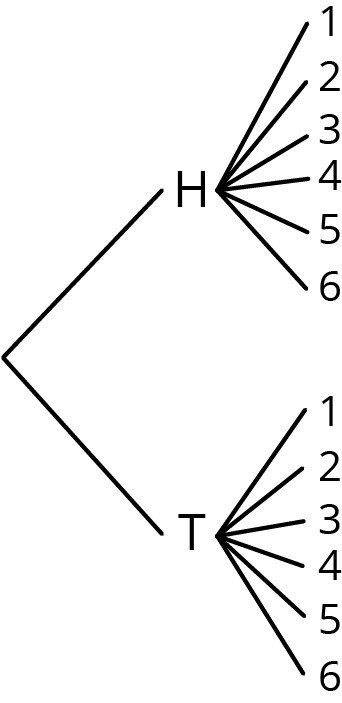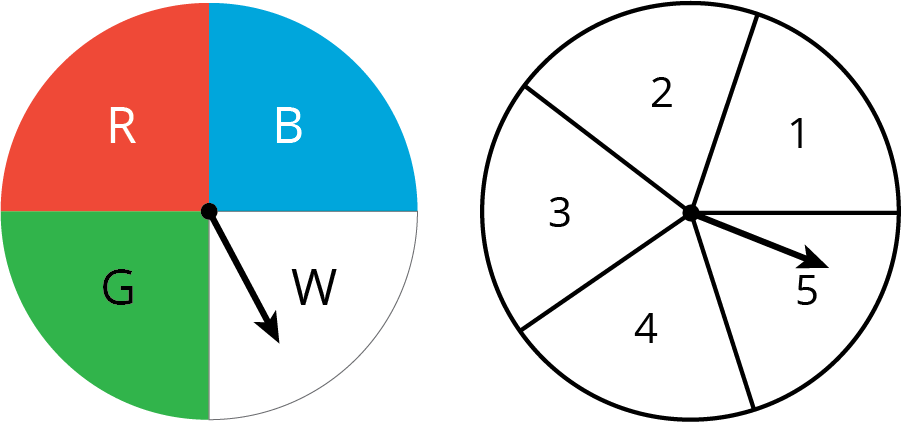Sometimes we need a systematic way to count the number of outcomes that are possible in a given situation. For example, suppose there are 3 people (A, B, and C) who want to run for the president of a club and 4 different people (1, 2, 3, and 4) who want to run for vice president of the club. We can use a tree, a table, or an ordered list to count how many different combinations are possible for a president to be paired with a vice president.
With a tree, we can start with a branch for each of the people who want to be president. Then for each possible president, we add a branch for each possible vice president, for a total of $3\boldcdot 4 = 12$ possible pairs. We can also start by counting vice presidents first and then adding a branch for each possible president, for a total of $3 \boldcdot 4 = 12$ possible pairs.

A table can show the same result:
| |
1 |
2 |
3 |
4 |
| A |
A, 1 |
A, 2 |
A, 3 |
A, 4 |
| B |
B, 1 |
B, 2 |
B, 3 |
B, 4 |
| C |
C, 1 |
C, 2 |
C, 3 |
C, 4 |
So does this ordered list:
A1, A2, A3, A4, B1, B2, B3, B4, C1, C2, C3, C4



